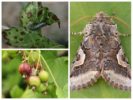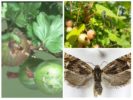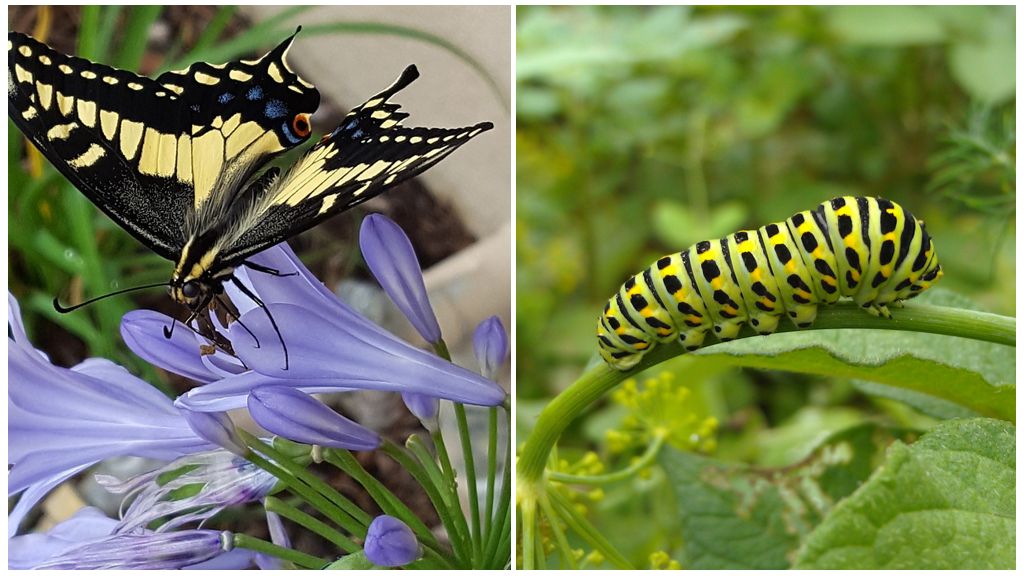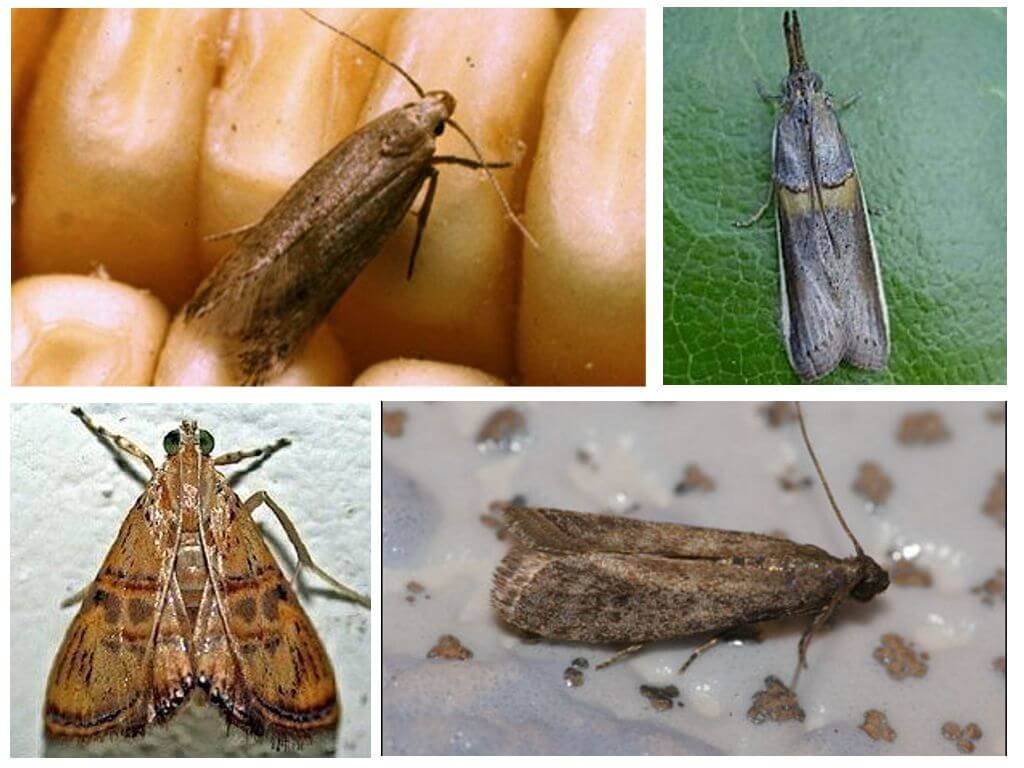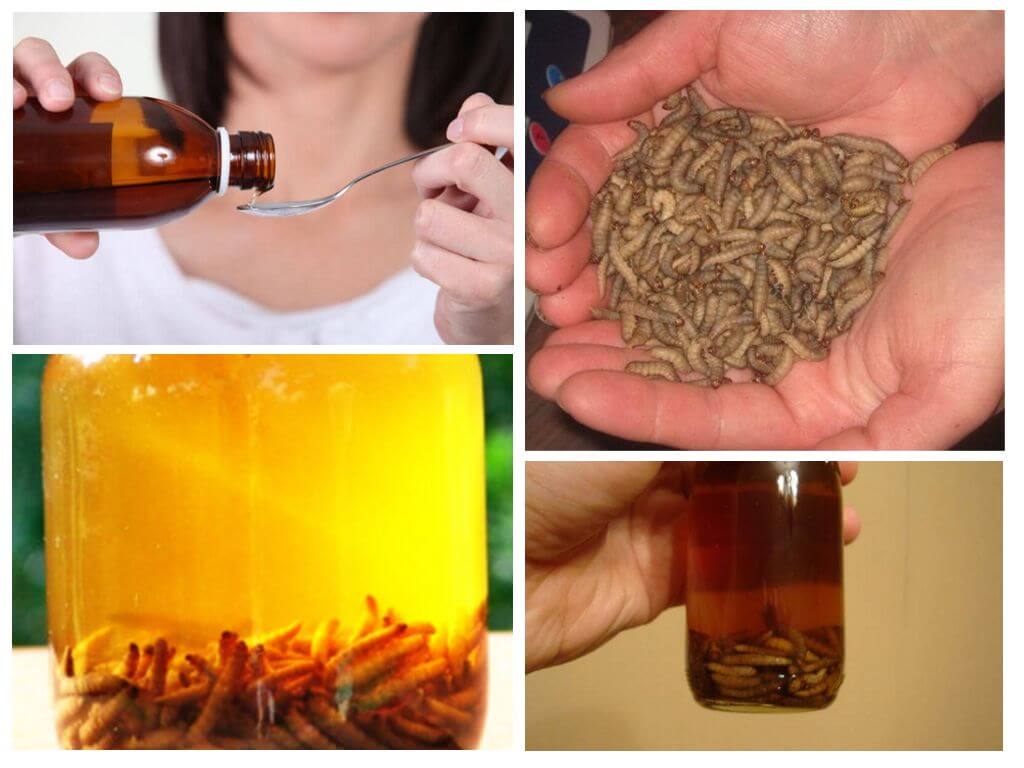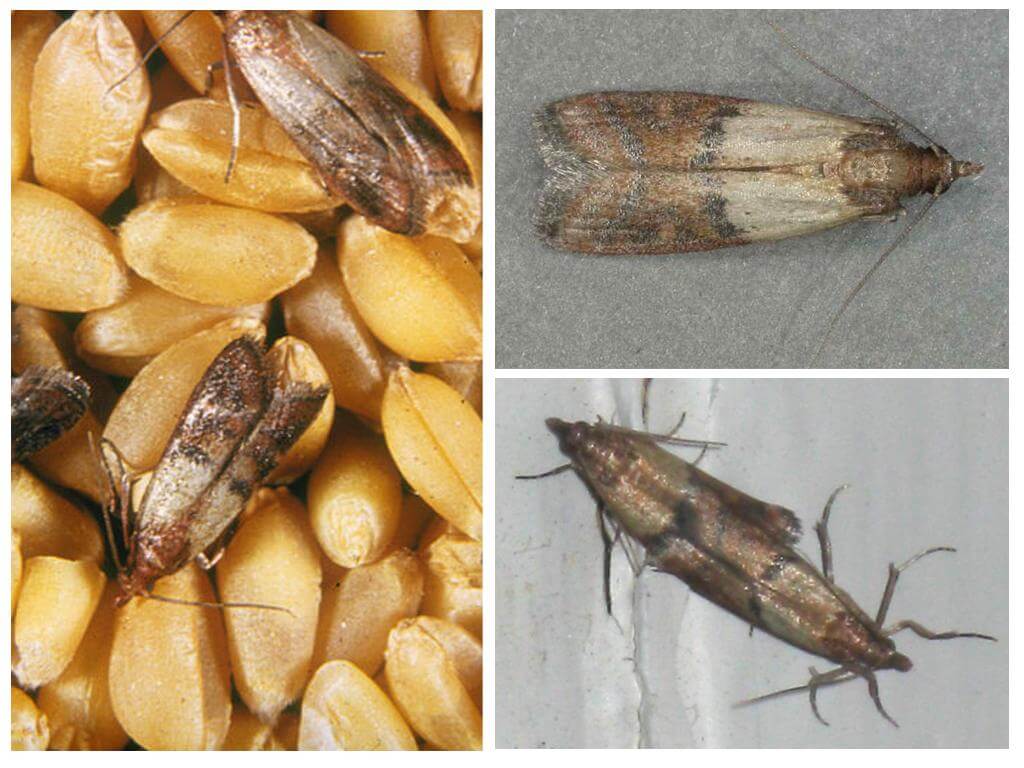- Gooseberry moth
- Gooseberry moth
- Gooseberry remedies
Gooseberry moth - a dangerous pest of gardens. It is capable of destroying a carefully grown crop of berries and causing irreparable harm to green spaces. A dangerous insect is ubiquitous in the middle lane and in the north of Russia, where gooseberries and currants are massively grown. A small nondescript butterfly related to to the fire, reaches a length of 12-14 mm. The wingspan of the insect is 24-30 cm. Gooseberry moth belongs to the order Lepidoptera. The color of the butterfly is gray-brown. On the wings there are horizontal dark zigzags and dark jagged lines along the outer edge, and in the middle there is a brown rounded spot. The forehead is convex, has a conical shape due to numerous scales. On the head of a gooseberry butterfly, a filiform tendrils are placed.
Pest Life Cycle
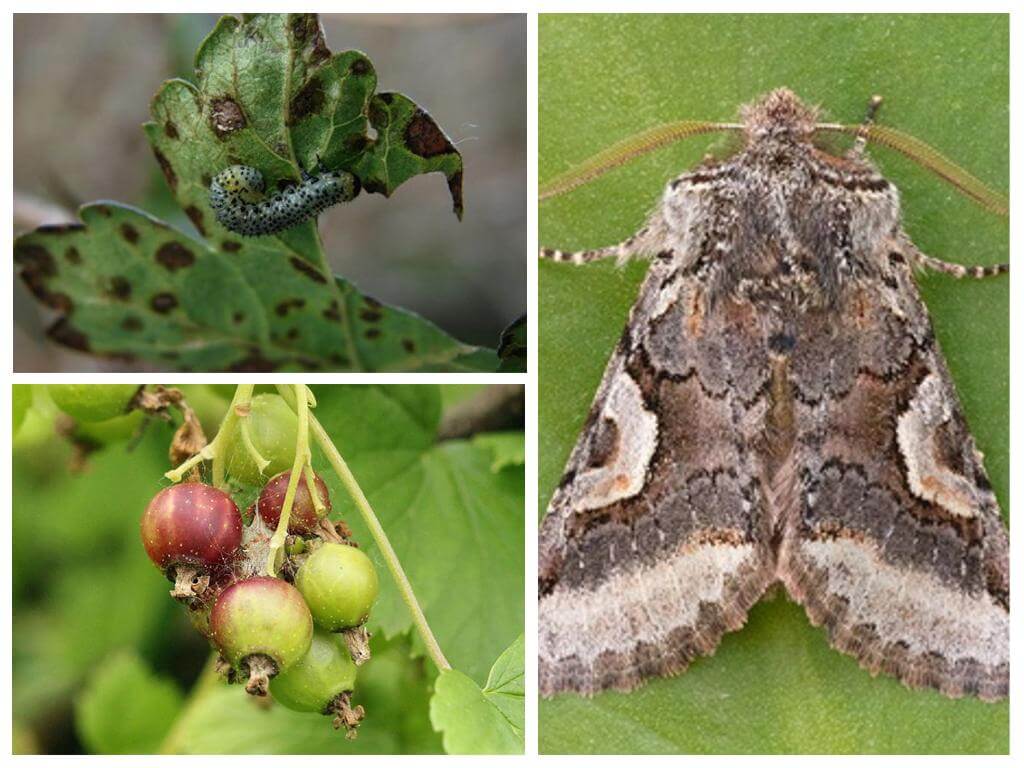
Pupae of gooseberry moths winter in the upper layers or in soil cracks at a depth of 5-7 cm under gooseberry or currant bushes in cobwebs of cobwebs. In the spring, during the formation of buds on the berry bushes and the beginning of flowering, there is a massive departure of gooseberry moths, which lasts for a whole month. Females begin to lay tiny, oval-shaped, white eggs in flowers, buds, and even on the ovary. The laying of one adult reaches 200 pieces. Egg maturation lasts approximately one week. Hatching caterpillars, up to three millimeters in length, have a white-yellow color. Only one individual remains in each ovary, the rest move to other flowers.
The voracious caterpillars of the gooseberry moths begin to exterminate seeds and juicy berries, entangling them with a cobweb. One pest is able to eat about fifteen currants or from five to seven gooseberries. Adult moth caterpillars are distinguished by a green color and a black head. Their length can vary from 8 to 14 mm, and round black spots are located on the sides. Gooseberry moth in the photo presented on the site will allow you to get acquainted with all stages of the development of the insect.
During the season, only one generation is fully developed. The length of stay of the moth in the caterpillar stage before pupation depends largely on weather conditions and the type of food. On a gooseberry, an individual develops more intensively. On blackcurrant, this period can last a week and a half longer and is approximately a month. Before pupation, the gooseberry caterpillar on the cobweb descends to the ground and deepens into it by no more than five centimeters. Here is the change in her condition. Pupae are arranged in small groups, 5-7 pieces each.
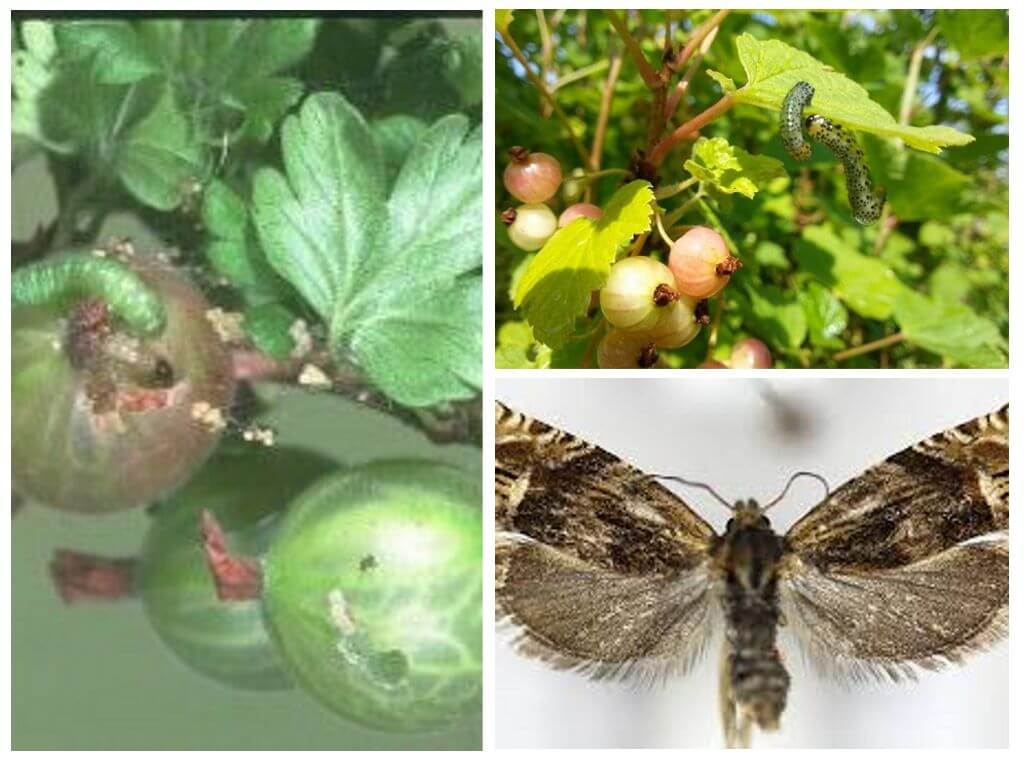
Important!
Gooseberry ognevka causes great damage to the bushes of currants and gooseberries. Webbed bushes and damaged brown berries have an unsightly appearance. Having carefully examined the fruits of gooseberries or currants, you can notice small holes on them, from which cobwebs stretch to neighboring berries. If measures are not taken in time and the fight against the pest is started, the harm done can take on a catastrophic scale.
Methods of fighting from the fire on the currant and gooseberry
Gardeners use a variety of methods and techniques to protect their wards. Allocate the following basic measures to combat gooseberry moth:
- agricultural practices;
- folk recipes;
- chemical methods.
Agrotechnical techniques
Possessing information that gooseberry pupae of the pest winter in a cocoon, which is located in the upper layer of soil directly under a bush of currant or gooseberry, it is necessary to carry out such measures:
- dig up the ground under the bushes throughout the season, and closer to the fall, carry out deep hilling of the plantations to a depth of 12 cm;
- removal of treated plants after flowering;
- plant tomatoes and mint near berry bushes;
- timely thin out plantings of gooseberries and currants to ensure ventilation and the availability of sunlight;
- if damaged fruits and foliage are found, remove them, preferably with caterpillars;
- attract gooseberry moths to the site of natural enemies, which destroy caterpillars and pupae. These include ground beetles and riders of the braconid family.
These techniques will help significantly reduce the number of pests.
Folk methods
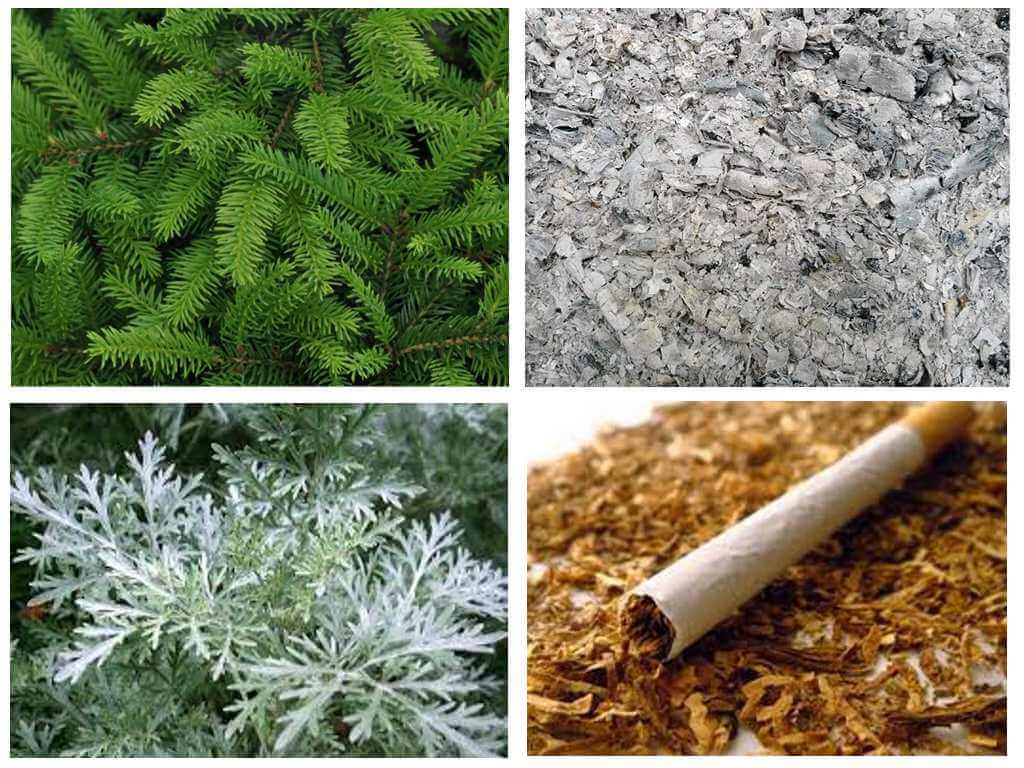
You can fight gooseberry moth with the help of folk recipes. These techniques will be effective if the situation is not in an advanced stage. Folk wisdom recommends:
- during the flowering of berry bushes, stick branches with blossoming elderberry blossoms in their middle;
- apply dust powder to the ground under the bushes;
- spray plants with mustard tincture, coniferous extract, infusion of tomato tops and ashes;
- in the flowering phase, treat plantations with decoctions of tobacco and wormwood;
- use a solution of green soap to destroy the gooseberry moth caterpillars.
If all of the above methods did not give the proper result, then you should proceed to chemical preparations.
Chemicals
For ardent opponents of chemistry, the use of light traps is recommended. This insect accounting technique has become especially popular recently. It allows you to determine the periods of spread of parasites. The device can be made of brightly colored cardboard, mainly yellow and orange. The surface is coated with a special long-drying adhesive. After a while, the entire trap will be surrounded by butterflies.
Among the widely used insecticides are:
- «Kinmix". The drug is effective against caterpillars and butterflies.
- «Spark". A tablet form of release that requires the preparation of a working solution.
- «Karate". It has a wide spectrum of action, kills pests at all stages of development - from the caterpillar to the imago.
The use of potent drugs requires compliance with basic safety rules.
